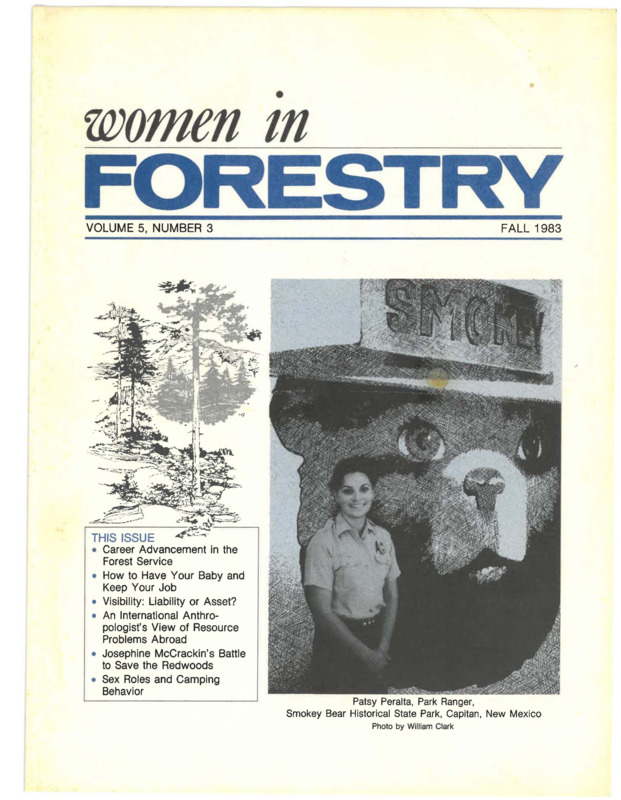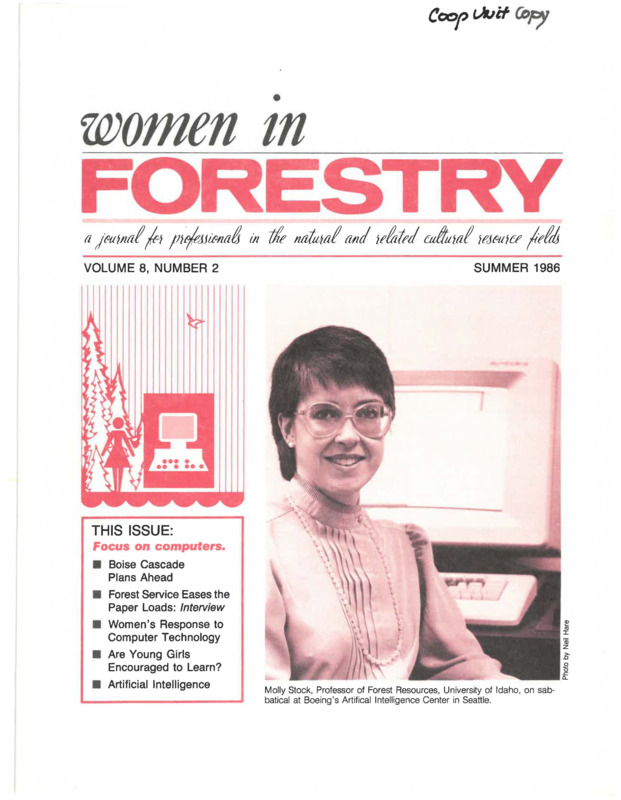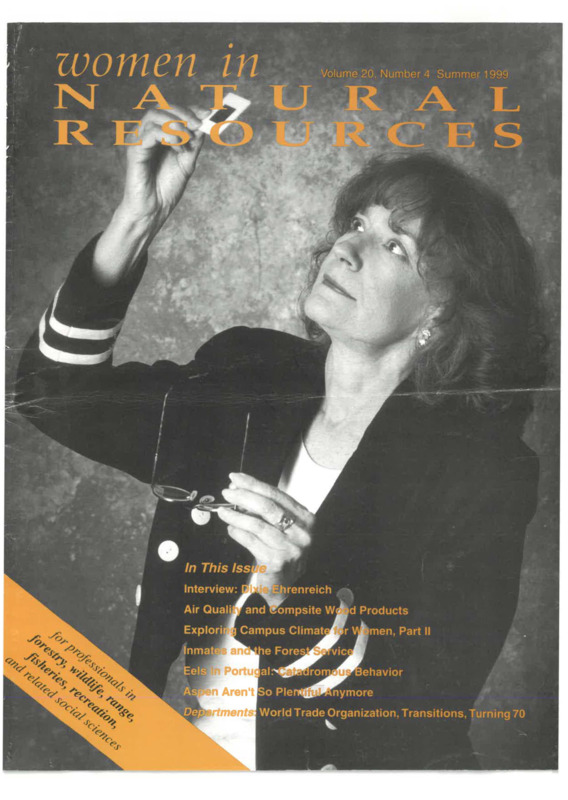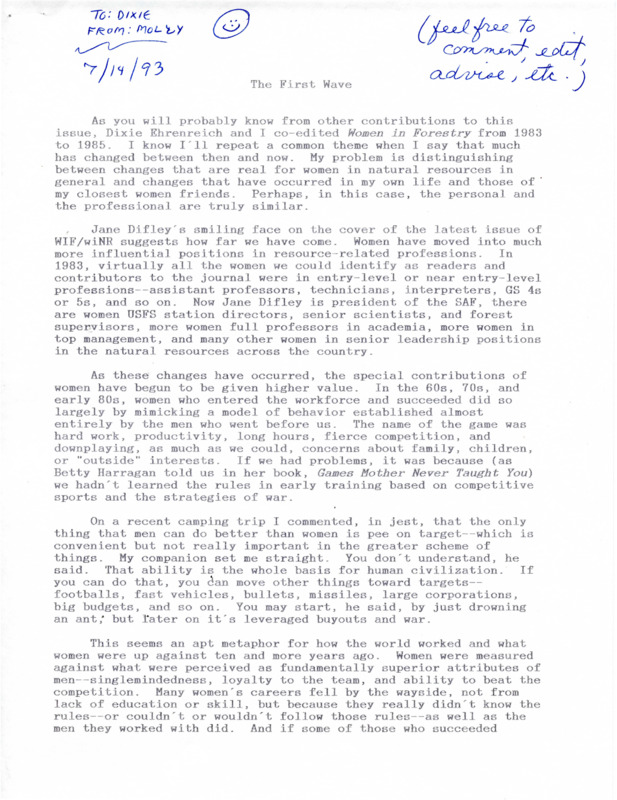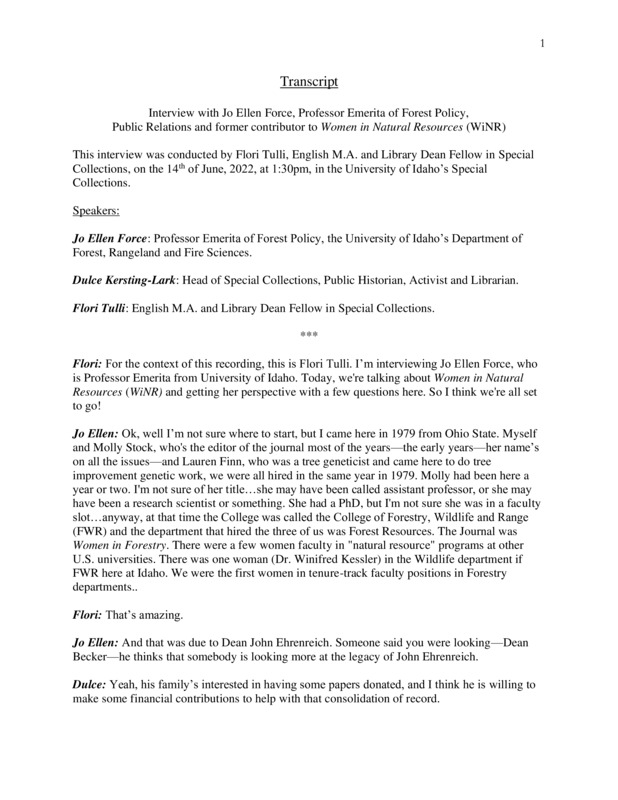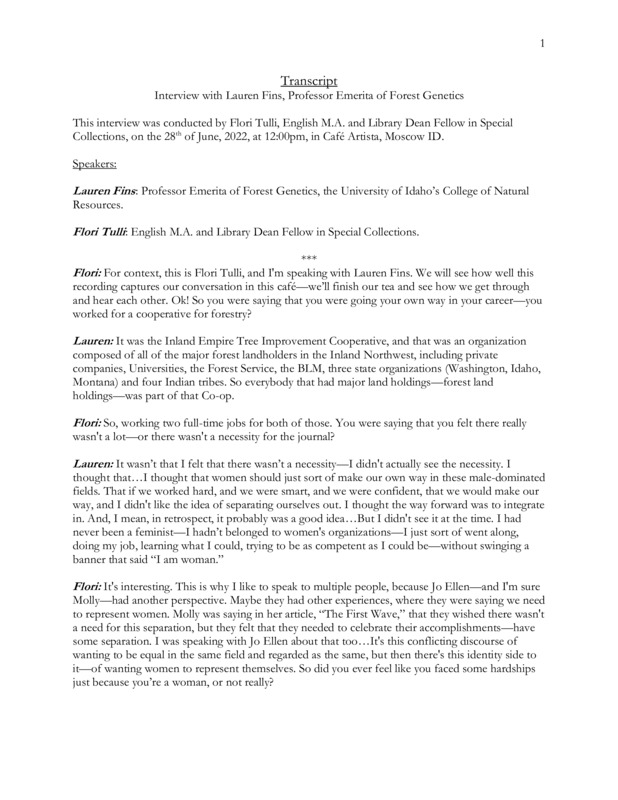Post written by Flori Tulli, 2022 Special Collections Summer Fellow.
My job was to make the Women in Natural Resources, or WiNR, Collection accessible to future researchers. Part of that accessibility was making documents readily available at request. But availability does not always equate to accessibility: I also wanted viewers to understand this collection. So that’s where I started my own exploration: What is WiNR?
Quite simply, WiNR was a journal published by the University of Idaho and created by, well, women in natural resources! See Women in Natural Resources collection
“Excellent!” I thought as I started to pour over and re-folder documents, “but not a whole lot of context there…” Not only was it a broad subject, but the materials themselves had a wide breadth: some folders revealed letters of correspondence, others contained submissions, and hidden among them were sometimes photographs of smiling, determined women doing anything and everything outdoors: hiking through mountains, excavating dig-sites, fighting fires, giving speeches, sharing laughs, you name it. It was all so dizzying, trying to find some semblance of a pattern, names of interest, and for a moment I had to step back and wonder: why? Why was Women in Natural Resources created? And who were these women?
I found the answers to these questions by speaking with the women themselves. Eventually, I latched onto the name Dixie Ehrenreich, the managing editor of WiNR from 1983 to 1999. You will find her name on most letters of correspondence and see her written feedback on many submissions. She also happens to be the wife of Dean John Ehrenreich, and together, they played an instrumental role in getting the first three women to receive tenure in Forest Resources at the University of Idaho: Molly Stock, Jo Ellen Force and Lauren Fins.
Here are their stories:
Through the help of Dulce Kersting-Lark, Head of Special Collections and Archives at the University of Idaho Library, I managed to get in contact with Dixie herself. Not only did Dixie kindly answer my questions about her experience working with WiNR, but she also provided previously missing journals for me to add to the collection. One of these journals, Volume 20, Number 4, includes her perspective on working as WiNR’s managing editor for 17 years.
While Molly Stock, Professor Emerita of Computer Science, conversed with me about the journal, she was unavailable to meet for an interview. Luckily, as a contributing editor of the journal, she had submitted several articles, including “The First Wave.” This historical recount captures the experience of women entering natural resources fields in the 1970s and explains their goals with creating WiNR.
Dulce and I met with Professor Emerita of Forest Policy, Jo Ellen Force. She is the first woman to be the Head of the Department of Forest Resources, later renamed the Department of Forest, Range and Fire Sciences in about 2010, and she headed the department from 1997-2013. At the time she started, she was the first woman in the U.S. to be head of the department with an accredited forestry B.S. degree. As a major supporter of WiNR, Jo Ellen acted as public relations for the journal in the 1980s, finding and contacting many contributors through the Society of American Foresters (SAF). During our interview, she gave me a detailed recollection of not only the founding of WiNR but also context about who was instrumental in its success.
Lastly, I met with Professor Emerita of Forest Genetics, Lauren Fins. She was the first woman to become Head of the Inland Empire Tree Improvement Cooperative. Although she did not contribute to WiNR, her interview attests to the history of the journal’s foundation: like many women, she strove to succeed in a male-dominated field. Through both her own hard work and the support of others, she not only achieved this success but also serves as one example of the many women in Natural Resources who didn’t back down in the face of adversity.
Continue reading about who were the women in WiNR in the next blog post!
If you would like to see more photos and submissions about these women in Natural Resources, please visit the Women in Natural Resources Digital Collection


